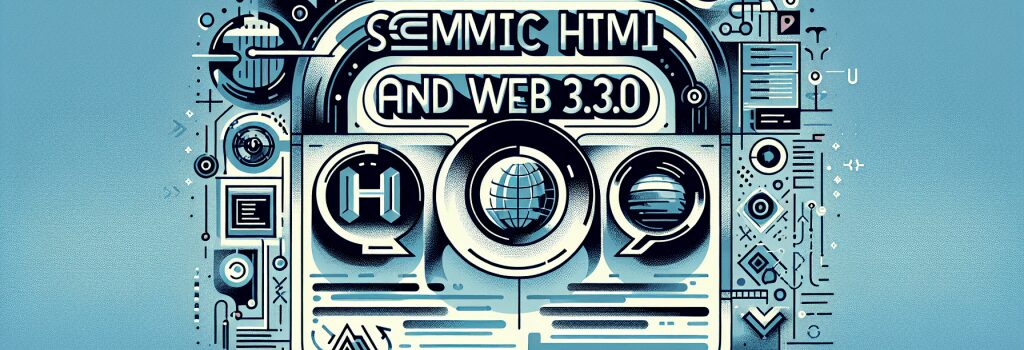Preparing for the Future: Semantic HTML and Web 3.0

You’ve heard of the future, haven’t you? Yes, that elusive concept we’re all striving towards where cars will fly, and robots will serve us our morning coffee. It’s seductive, isn’t it? But you’re not here for the future—I mean, you are, but not for flying cars or robot baristas. You’re here for the future of web design: Semantic HTML and Web 3.0. So brew some real coffee, prepare your coding glasses, and let’s dive into the future of the web.
What’s This ‘Semantic HTML’ You Keep Going on About?
I’m glad you asked, dear reader. Semantic HTML is nothing more than coding’s way of telling your web page, “Hey, this part? That’s your arm. And that over there, that’s your leg.” It simply gives meaning to web content. In essence, it informs the browser about the type of content it is dealing with, whether it’s a header, an article, a navigation bar, or a footer. Search engines love semantics. In fact, they might love it even more than their search engine partners!
So, How Does It All Fit in Web 3.0?
Well, strap on your sci-fi goggles because this is where things will start getting a bit futuristic. Web 3.0, or as some like to call it, “the intelligent web,” aims to understand content in a similar way as humans do. So, instead of looking at data as just ‘data,’ it will be able to interpret, classify, and comprehend it with a conceptual understanding. It’s like your website becoming sentient. Skynet, anyone? No? Okay, moving on.
Now, to help the web understand your content, we will need to weaponize Semantic HTML. This will allow the intelligent web to map out your content correctly, which ultimately boosts SEO rankings. Bing and Google will give you a virtual pat on the back for doing it.
Preparing Yourself for The Future with Semantic HTML
Before plunging headfirst into Semantic HTML, let’s put on our water wings. Technically, semantic elements aren’t new concepts. You’ve been using some without even realizing it. Tags like ;<table>>, ;>, and ;<img>> are all semantic elements, saying, “Hey, I’m a table, I’m a form, I’m an image”.
But Semantic HTML adds in more precise elements like ;<article>>, ;<aside>>, ;<details>>, ;<figcaption>>, ;<figure>>, ;<footer>>, ;<header>>, ;<main>>, ;<mark>>, ;<nav>>, ;<section>>, ;<summary>>, and ;>. And don’t worry if that looks like a mouthful of jargon soup, we will simmer it down to a manageable bowl of learnable strands.
So, get comfy, strap on your coding gloves, and let’s start coding HTML like a boss. And remember, it’s not just about tag bashing—it’s about understanding the semantics and creating a well-organized, future-ready website that even a robot from the future can’t help but appreciate (And hopefully, not overthrown!). Welcome aboard the time machine for the future of HTML web designing!
Remember, future web experts are made by taking one coding step at a time. So dive into your first lesson of Semantic HTML today, and who knows? Maybe one day you will be designing the algorithm for that future robot barista serving morning coffee.


